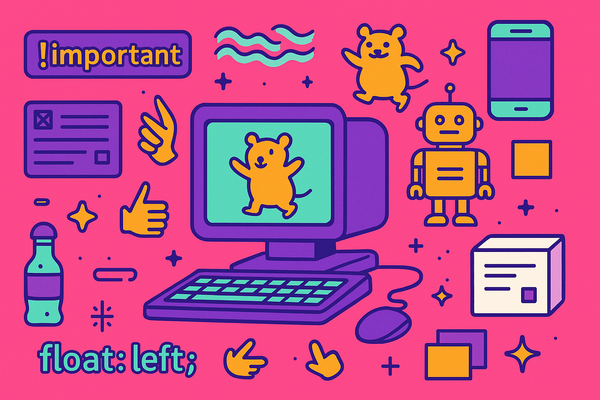Agentic AI Isn't Out to Replace You - It's Out to Redesign Your Job

We are in the age of agentic AI.
You’ve probably noticed that AI is creeping into your tools, your workflows, and your life in ways that feel…different. It’s no longer just about autocomplete or smarter search. We’re entering the age of agentic AI — AI that doesn’t just respond, but acts.
And no, “agentic” isn’t just a word cooked up by a startup pitch deck. It comes from psychology (look up Albert Bandura circa 1980s) to describe the capacity to act in a self-directed an autonomous manner. Only recently did the AI world grab it, dust it off, and slap it onto software that takes initiative.
What Agentic AI Really Means
When people hear “agentic,” they sometimes picture sci-fi robots plotting world domination. Relax. In practice, it’s much more boring — and much more useful. These are systems that pursue goals, make decisions in context, and sometimes act before a user even asks.
Think: Gmail suggesting an entire reply draft. Or your calendar rearranging itself to fit in a last-minute meeting. The AI isn’t politely waiting for you to click a button — it’s barging in with, “Don’t worry, I’ve got this.”
That shift — from reactive to proactive — is what makes agentic AI different.
Why It Matters for UX
Traditional interfaces are built on structure: menus, navigation, forms, and flows. Users poke at things until they get to what they need. Agentic AI flips that. The user says what they want (or sometimes doesn’t say anything at all), and the system just…does it.
So our job as designers isn’t just crafting pretty buttons anymore. We’re designing behaviors. We’re designing trust. We’re designing the invisible handoff between a person and their AI — which, yes, sometimes feels like designing the rules for a slightly overeager intern.
The UX Workflow Before (and After) Agentic AI
Here’s a quick reality check on how our design process has looked up until now:
Before Agentic AI:
- Research user goals → Map them into step-by-step flows.
- Design clear navigation, hierarchies, and entry points.
- Optimize usability by reducing clicks and friction.
- Prototype static screens to test comprehension and efficiency.
After Agentic AI:
- Research user goals → Also research how an AI might try to be “helpful” on their behalf.
- Instead of mapping just flows, storyboard behaviors (what the AI does in the background, how it notifies the user, how handoffs occur).
- Optimize trust more than clicks — because let’s be honest, users don’t care about your perfect navigation tree if the system just did the work for them.
- Prototype conversations and decisions, not just screens.
The difference? We’re no longer only designing for humans navigating software — we’re designing for humans negotiating with software that thinks it knows best.
Principles to Keep in Mind
So, how do you design for something that might not even show up as a screen? A few ground rules help:
- Transparency builds trust. Tell people what the AI is doing and why (bonus points if it’s not creepy).
- Control is non-negotiable. Let users override — even if the AI is technically right.
- Feedback loops matter. People want to correct the AI — think of it as part of the user journey.
- Don’t be creepy. Predicting needs is good; showing you’ve been watching too closely is not.
- Context is king. “Helpful” in one moment is “intrusive” in another.
Design Patterns Already Emerging
We don’t have to wait for the future to see this in action. Some patterns are already taking shape:
- Proactive helpers: Smart compose, auto-layout, error fixing.
- Conversational shortcuts: “Book me a flight for tomorrow” instead of spelunking through dropdowns.
- Background execution: AI quietly does the grunt work and shows up later with results (like a good assistant).
- Agent-to-agent collaboration: Systems doing the boring coordination work that no human wants anyway.
- Free form navigation: When users can just ask the UI (via search or an assistant) the need for heavy-handed menus and buttons goes away.
If you’ve noticed these popping up in your favorite tools, congratulations — you’ve already been designing with agentic AI. You just didn’t have the jargon for it yet.
What UX Designers Should Do Differently
Here’s where it gets interesting. To design with agentic AI, we need new muscles:
- Storyboarding behaviors, not just flows. Sketch how the AI acts over time, not just where a button goes.
- Defining boundaries. Decide what the AI should never do (like send emails at 2 a.m. “on your behalf”).
- Mapping trust touchpoints. When to show explanations, when to ask for confirmation.
- Expanding inclusivity. AI decisions carry bias risks — your designs should surface fairness, accessibility, and cultural awareness.
- Prototyping differently. Mock conversations and agent choices, not just screens.
Watch Out for Red Flags
Agentic AI is powerful, but it comes with traps:
- Taking too much control (hello, frustration).
- Creepy anticipation that feels like surveillance.
- The “black box” problem — nobody knows why something happened.
- Ethical gray zones: when “helpful nudges” turn into manipulation.
If you’ve ever thought, “This tool feels a little too smart for its own good,” you’ve seen the dark side of agentic design.
What the Future of UI Might Look Like with Agentic AI
Agentic AI is slowly killing off the need for navigation-heavy UIs. The future isn’t about guiding users through a map of menus — it’s about negotiating outcomes with an agent. Here’s how agentic AI might reshape the next generation of interfaces:
- From Navigation to Conversation: Fewer deep menus, more conversational shortcuts — UI as a thin surface on top of an AI brain.
- Dynamic Interfaces: Screens adapt themselves based on what the agent already knows. Frequent traveler? Your airline app skips the fluff and jumps to check-in.
- Trust Layers in the UI: Inline “why this action?” explanations, confidence indicators, or “undo” buttons baked right into the interface.
- Shared Agency in Workflows: Imagine design tools where the AI drafts the layout, and the UI becomes a space to critique and steer it.
- UI as Dashboard, Not Map: Less about guiding step-by-step, more about showing what’s been done (and letting the human step in when needed).
In short: we won’t stop designing UIs — we’ll design UIs that make working with an agent feel clear, trustworthy, and efficient.
How to Start Practicing Now
You don’t need to wait for some futuristic platform. Start now:
- Play with AI-driven tools like Copilot, Notion AI, or Gemini to see how they behave.
- Run design exercises: “What if this task happened without the user asking?”
- Document AI behaviors alongside screens in your design specs.
- Join conversations about AI ethics and UX standards — because this space is still being defined.
Wrapping Up: From Interfaces to Partnerships
The bottom line? Agentic AI changes the design game. Instead of designing just interfaces, we’re designing partnerships — relationships between humans and machines.
And that’s exciting. Because if there’s one thing UX designers are good at, it’s demystifying complexity. Our role is to make this new wave of AI not just powerful, but also human-friendly — and maybe, just maybe, a little less smug about how “agentic” it is.





